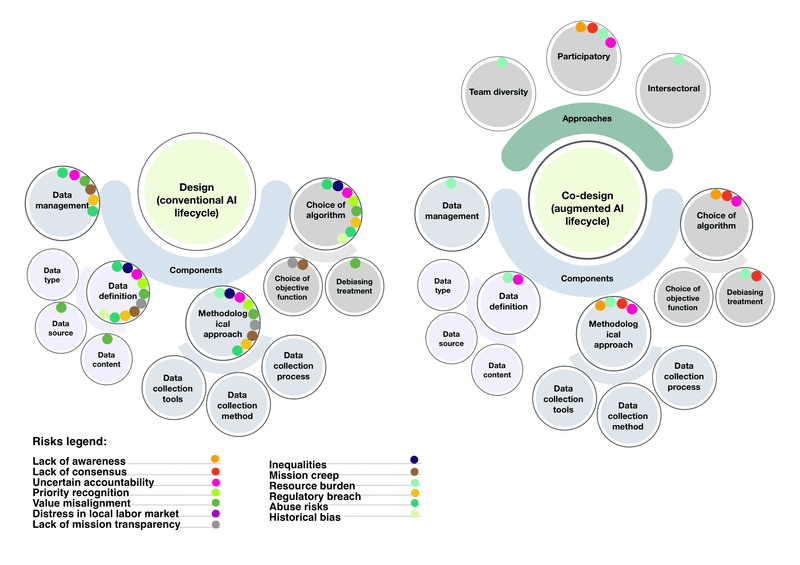Build AI With People, Not For Them
2025-07-31
Five phases for building AI that communities trust, because they helped shape it from the start.
Why This Matters
Too much AI is still built about people, not with them.
Co-Producing AI changes that dynamic by treating communities as equal partners at every stage, from defining the problem to deciding when to retire a system.
This isn’t about token feedback sessions or vague promises to “circle back.” It’s about shared power, open choices, and long-term accountability.
The People-First Lifecycle
The playbook unfolds in five connected phases.
Co-Framing is where it starts. Communities and developers work together to define the problem, understand who is most affected, and decide who has a voice—and even veto power—before any model is trained.
In Co-Design, decisions about data, models, and interfaces happen in the open. Participatory prototyping weighs trade-offs between accuracy, privacy, explainability, and cost in real time, with all stakeholders at the table.
Co-Implementation brings full transparency to training and fine-tuning. Model cards, dataset summaries, and error logs are published for public review.
During Co-Deployment, systems go live with clear rules: how to raise issues, how to prevent scope creep, and when to roll things back.
Finally, Co-Maintenance ensures the process doesn’t end at launch. Systems are regularly audited—not just for technical drift, but for ethical health and participatory strength. When features change, communities are re-consented.
What We Learned Along the Way
Shifting real decision-making power to those most affected builds deeper trust.
Feedback must be continuous, not a one-off formality.
Privacy needs to be tailored to each context, rather than forced into a single mold.
And meaningful participation takes resources, funding for travel, childcare, and accessibility so everyone can actually take part.
What You Leave With
By the end of this process, teams walk away with a governance charter that includes real appeal rights; a public model card and dataset description shaped by community input; a recourse and transparency portal with release notes and audit logs; and an audit schedule that addresses both technology and ethics.
How This Came Together
The playbook grew out of four multidisciplinary workshops in Montréal (2024), involving 20 experts from research, industry, and civil society. It was informed by a scoping review of 76 key works across computer science, social science, humanities, and policy, spanning 2013 to 2024.
Why This Approach Stands Apart
Global AI guidelines, from the Montréal Declaration to IEEE EAD, NIST AI RMF, and EU Trustworthy AI, give us principles. This framework adds the missing “how”: practical checkpoints, governance routines, and a commitment to ongoing co-maintenance.
Visuals

Five phases connected by continuous feedback and shared accountability.

Design vs. Co-design.
Where It Works Best
This approach is especially powerful in AI governance, where big ideas need to translate into everyday practice. It’s vital for high-stakes systems in health, finance, and public services, places where trust is not optional. And it can help shift organizational culture away from “participation-washing” toward genuine, resourced involvement.
Tags:
AI Governance · Participatory AI · Co-design · Design Justice · Expansive Learning · DEI